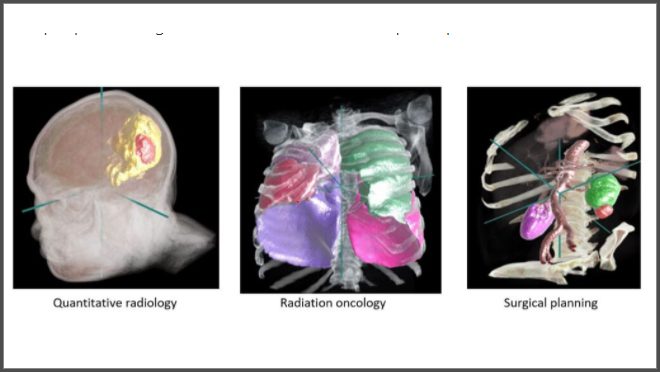For around 10 years, the Project InnerEye team at Microsoft Research Cambridge has been working on machine learning methods for the automatic, quantitative analysis of 3D medical images.
This will be an important application that will help assist clinicians in image preparation and formalizing plans for radiotherapy cancer treatment. This will take into consideration a radiation oncologist or a specialist technician manually examining and marking up dozens of 3D Computed Tomography (CT) image scans.
Initially, it will take one or more hours, depending on the degree and type of cancer. Microsoft research depicts that machine learning (ML) can help reduce this pressure on clinicians by decreasing the time for completing the task and reducing the task to a few minutes.
Project InnerEye has teamed up with the University of Cambridge and Cambridge University Hospitals NHS Foundation Trust to work on this.
Dr. Raj Jena, who is the Group Leader in ML and radiomics in radiotherapy at the University of Cambridge, said,
The strongest testament to the success of the technology comes in the level of engagement with InnerEye from my busy clinical colleagues. The automated segmentation of images for radiotherapy planning has not got any shape in 15 years.
With the InnerEye ML model, the data has been trained, the consistent segmentation performance can be traced to a standard that matches the accuracy.” The goal of Project InnerEye is democratizing AI for medical image analysis and empowering developers at research institutes, hospitals, life science organizations, and healthcare providers to creating their medical imaging AI models using Microsoft Azure.
So to make our research as accessible as possible, they are releasing the InnerEye Deep Learning Toolkit as open-source software. The toolkit makes it easy to train high-performance models with ensembles for deploying models using Azure Machine Learning or Azure Stack Hub.

The open-source InnerEye Deep Learning Toolkit Developing ML models for medical imaging is advancing rapidly as new techniques, such as deep neural networks, continue improving.
Focusing on core ML advances can be difficult due to the complex software engineering and computing infrastructure needed to define, train, test, and track their projects.
They developed a common framework for our own team to streamline the projects, taking advantage of Microsoft Azure. Microsoft Azure is here with Windows Virtual Desktop(WVD). Classification, regression, and sequence models can be built with only images as inputs, or a combination of images and non-imaging data as input.
This will support cases on medical data where measurements, biomarkers, or patient characteristics are often available in addition to images. The users can use pre-configured neural networks, such as UNet3D, or bring their own networks. a screenshot of a social media post.




